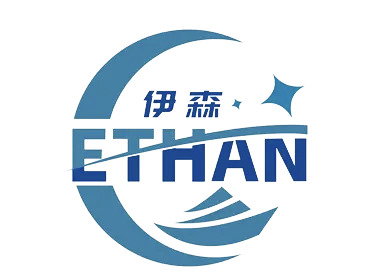Introduction to Rising Duties
Rising duties, or tariffs, play a critical role in international trade by regulating the flow of goods between countries. Essentially, these duties are taxes imposed on the import or export of goods, aimed at protecting domestic industries from foreign competition or raising government revenue. However, increasing tariffs can have significant economic implications. According to the World Trade Organization (WTO), higher tariffs can disrupt global trade flows, potentially leading to trade wars that affect both the exporting and importing countries' economies.
The economic implications of increasing tariffs are widespread. For many businesses, especially those reliant on imports, higher tariffs can lead to increased production costs. This, in turn, can affect their competitiveness in the global market. For instance, industries such as manufacturing, which heavily depend on raw materials from overseas, might see a spike in costs due to rising tariffs, thereby impacting their cost structures. A study by the National Bureau of Economic Research found that U.S. industries paying higher tariffs on Chinese imports experienced significant reductions in profitability due to escalated production expenses.
Moreover, the broader effects on consumer prices and purchasing power are notable. As businesses face increased production costs, these are often transferred to consumers in the form of higher prices for goods and services. For example, a report from the International Monetary Fund (IMF) highlighted that a 10% rise in tariffs could lead to a corresponding increase in consumer prices, ultimately reducing purchasing power. This phenomenon exacerbates inflationary pressures, constraining consumers' ability to spend and potentially hindering economic growth. Therefore, while rising duties may solve the duty rise in government revenues short-term, their long-term impact on the economy is substantial and multifaceted.
Strategies to Mitigate Duty Increases
Diversify Suppliers: Source from countries with lower tariffs
To effectively manage the risks associated with rising tariffs, businesses need to diversify their supply chains. By considering alternative suppliers, especially those in countries with lower tariff rates, businesses can significantly reduce their cost burden. For example, Vietnam and Thailand have become popular sourcing destinations due to their competitive tariff structures and increasing manufacturing capabilities. Successful diversification is seen in companies like Apple, which shifted part of its production to countries like Vietnam, thereby minimizing tariff impacts and ensuring a more stable supply chain.
Leverage Free Trade Agreements (FTAs): Utilize preferential tariff rates
Free Trade Agreements (FTAs) are crucial tools that allow businesses to enjoy reduced or zero tariff rates. These agreements facilitate smoother international trade between member countries, providing economic benefits through lower duty costs. For instance, the US-Mexico-Canada Agreement (USMCA) offers preferential tariff rates that businesses can capitalize on. Companies looking to benefit from FTAs should ensure they are fully compliant and utilize the specific provisions relevant to their operations. Resources like the government trade portals can offer detailed guidance on accessing these agreements effectively.
Optimize Product Classification: Use accurate HS codes to reduce duty rates
Harmonized System (HS) codes play a key role in determining the duty rates for products. Accurate HS classification ensures that businesses do not overpay on duties due to misclassification. Companies are encouraged to regularly review their product classifications to ensure correct HS code assignments, thus optimizing their cost structures. Case studies have shown that businesses implementing robust classification checks can substantially reduce duty expenses, underscoring the financial impact of precise product categorization.
Explore Duty Relief Programs: Utilize bonded warehouses or duty drawbacks
Duty relief programs offer businesses a means to temporarily alleviate the pressures of rising tariffs. Bonded warehouses are one such solution, allowing companies to store goods without immediate duty payments, thus improving cash flow management. Additionally, duty drawback programs enable businesses to reclaim previously paid duties on goods that are re-exported or used in the production of exports. These programs provide financial relief and enhance competitiveness, offering viable options for managing increased tariff costs.
Negotiate with Suppliers
Negotiating with suppliers is a crucial step for businesses to share cost burdens or renegotiate terms amidst rising duties. Open communication with suppliers about the impact of increased duties on pricing is essential. By clearly articulating how these duties affect your business, suppliers might be more open to a dialogue regarding cost-sharing, ensuring that the financial burden does not solely fall on one party. This mutual understanding lays the groundwork for potential renegotiation of terms that are beneficial for both.
To effectively renegotiate contracts, businesses should consider various strategic approaches. One method is to propose a shared responsibility model where both parties absorb a portion of the increased costs. This approach fosters a partnership mindset rather than a transactional relationship, ultimately benefiting both sides amidst challenging economic conditions. Additionally, businesses can explore alternatives such as longer contract terms in exchange for price stability or adjustments based on collective growth metrics.
Preparing for negotiation meetings is pivotal to achieving favorable terms. Businesses should come equipped with data and evidence highlighting the duty impacts on cash flow and profitability. It is also advantageous to research market trends and industry benchmarks to strengthen negotiation positions. Having a list of potential compromises, such as altered delivery schedules or phased pricing structures, can also be advantageous. Effective preparation enhances credibility and positions businesses to successfully navigate negotiations, mitigating the adverse effects of duty increases.
Invest in Local Production
Investing in local production facilities offers a strategic avenue for reducing dependency on imports and avoiding tariffs. Establishing local manufacturing capabilities can deliver long-term benefits by diminishing the impact of duty rises and stabilizing supply chains. With fluctuating global trade policies and unpredictable import tariffs, businesses can gain greater control over production costs and logistics by manufacturing domestically. This approach not only mitigates the risks associated with international trade uncertainties but also provides opportunities for localization of products and services, catering to specific regional markets with tailored solutions.
To understand the potential advantages of investing in local production, consider scenarios where businesses weigh the costs against the benefits. An analysis often reveals that initial capital investments in local facilities may be offset by reduced tariff expenses, lower transportation costs, and faster delivery times. Additionally, local production can lead to increased brand loyalty and market penetration, as products resonate more closely with specific consumer preferences within the region. This strategy can also enhance a company's sustainability profile through reduced carbon footprints from minimized transportation needs.
Examining case studies of companies that successfully reduced their reliance on imports paints a compelling picture of local production benefits. For instance, several businesses have reported improved profit margins through strategic localization, particularly in sectors sensitive to tariff changes, such as the automotive or electronics industries. By establishing local presence, these companies have not only navigated duty rise impacts effectively but have also bolstered employment within their regions, contributing positively to local economies. These examples underscore the importance of innovation and adaptability in a challenging global market environment.
Proactive Measures Can Help Manage Rising Duty Costs
Proactive measures are essential for effectively managing rising duty costs. Businesses should integrate the key strategies outlined earlier, such as investing in technology, enhancing supplier relationships, and exploring tariff exemptions. By adopting a proactive approach, companies can mitigate potential financial impacts and avoid unnecessary expenses related to duty increases. It is crucial for businesses to continually monitor tariff changes and adjust their strategies accordingly. Staying informed and flexible allows companies to adapt to a dynamic economic environment and maintain their competitive edge.
FAQ
What are rising duties?
Rising duties, or tariffs, are taxes imposed on imported or exported goods to protect domestic industries and increase government revenue.
How do rising tariffs affect businesses?
Rising tariffs increase production costs for businesses reliant on imports, reducing competitiveness and profitability in the global market.
What impact do rising duties have on consumers?
As businesses pass increased production costs to consumers, rising duties lead to higher consumer prices, reducing purchasing power and contributing to inflation.
How can businesses mitigate the impact of rising tariffs?
Businesses can mitigate tariff impacts by diversifying supply chains, utilizing FTAs, optimizing product classifications, exploring duty relief programs, and investing in local production.


